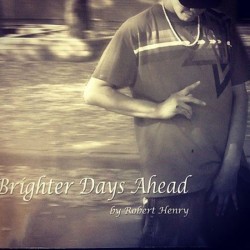Article Origin
Volume
Issue
Year
Brighter Days Ahead is a photo voice book that provides a glimpse into University of Saskatchewan Ph.D. candidate Robert Henry’s dissertation on masculinity, identity, Aboriginal men and gangs.
Nine of the 16 men to be featured in Henry’s dissertation are included in the book, which was launched last month.
“Their stories didn’t surprise me. What surprised me was how well they took hold of the project,” said Henry. “It’s a way to give something back because they’ve come to the understanding that they’ve taken so much from the community. Now they need to learn to give back to the community. And that’s the hardest part, being humble, understanding what has gone on and trying to fix it so that other youth… much like themselves don’t get caught up in the same type of lifestyle.”
Henry is familiar with the life that leads men to join gangs. He has been a board member and events helper for a number of years with STR8 UP, a Saskatoon program operated by the John Howard Society, which focuses on helping men and women leave gangs.
Gang members are marginalized individuals, who the system has failed, said Henry. They normally join in their mid-teens (although some join in their 20s) as the gang provides the support system members desperately need and can’t get elsewhere.
Henry spent time building a relationship with the men who participated in the book. Then he gave them digital cameras and asked them to take photos that spoke to who they were before they joined the gang and their experiences with the gang.
“It was really tough for some of them to go back and think about that life that they’re trying to leave behind, that they’re trying to move away from. So it was really tough for them to go back and try to show people what it’s all about,” said Henry.
Photos ranged from places they had lived or been to “spaces of violence” to inclusion of their own children. Henry ended up with almost 600 photos, taken between August 2012 and March 2013. While some participants took 10 to 12 photos and others took hundreds, the majority shot around 40 each.
“Some (photos) reflect metaphors of their lives,” said Henry. “I was looking at the idea of how the gang has come to shape their concepts of masculinity and identity.”
Of the nine that participated in the book, only three are over the age of 30. Four have left the gangs and the other five have made the “conscious decision to get out.” Henry points out that joining a gang is a 12 to 16-year process, while leaving a gang is also a long-term process.
Those that have been successful in distancing themselves from the lifestyle have found something else to hold on to. For two, it is Christianity; one is through renewing his culture; and a fourth has thrown himself into working hard and making money.
“The way in which people are pulled out of the gang is very reflective of their lifestyle before they even got in. How did they connect before-hand?” said Henry.
Henry hopes to have his dissertation completed by April 2014.
The ownership the nine men took of the voice photo book project will be part of his dissertation, which will answer the broader question of “how has the gang-set space come to be an area or space for some Indigenous men to practise their identity and masculinity.”
Henry, who is Métis from Prince Albert, has had his Ph.D. work funded through the Indigenous Peoples’ Health Research Council, which gives out awards to students whose work relates to Indigenous health research.
IPHRC helped launch Brighter Days Ahead.
“The book is knowledge translation from his research that we wanted to make sure got out there because I think it’s really important what he’s doing,” said Cassandra Ozog, IPHRC research officer in communications and knowledge transfer.
- 2661 views

